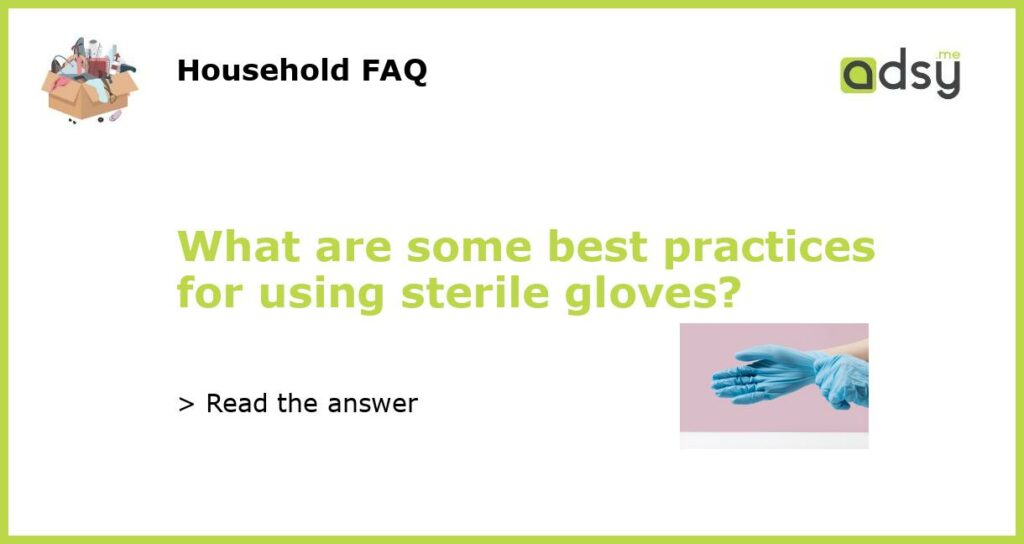Proper Glove Selection
Choosing the right sterile gloves is crucial to ensure optimal protection and prevent contamination. When selecting sterile gloves, it is important to consider factors such as material, size, and the specific purpose for which they will be used.
There are several types of material used for sterile gloves, including latex, nitrile, and vinyl. Latex gloves offer excellent tactile sensitivity and are commonly used in healthcare settings. However, they can cause allergic reactions in some individuals, so alternative materials should be used for those with latex allergies. Nitrile gloves are a suitable alternative to latex gloves, as they provide similar levels of dexterity and sensitivity. Vinyl gloves are another option, although they are less durable and offer lower levels of protection compared to latex or nitrile gloves.
Aside from material, selecting the right glove size is also crucial. Gloves that are too tight can cause discomfort and potentially lead to hand fatigue, while gloves that are too loose can compromise dexterity. It is important to measure hand size accurately and choose gloves that fit snugly but do not restrict movement.
Proper Glove Usage
Using sterile gloves correctly is essential to maintain a sterile environment and prevent contamination. Here are some best practices for using sterile gloves:
1. Always wash hands thoroughly with soap and water before putting on gloves. This helps minimize the risk of introducing contaminants.
2. Inspect the gloves for any visible defects, such as tears or holes, before use. Discard any gloves that are damaged.
3. Put on gloves by inserting one hand at a time, being careful not to touch the exterior of the gloves with bare hands.
4. Make sure the gloves cover the wrists and are snugly fitted, but not overly tight.
5. Avoid touching surfaces or objects that are not part of the sterile field while wearing gloves.
6. Change gloves between different patient interactions or when moving from a contaminated area to a clean area.
Proper Glove Removal
Proper removal of sterile gloves helps prevent contamination and maintain aseptic conditions. Follow these steps for safe and effective glove removal:
1. Pinch the outside of one glove near the wrist and peel it off, turning it inside out as you do so. Hold the removed glove in the palm of the gloved hand.
2. Slide two fingers from the bare hand under the remaining glove at the wrist and carefully pull it off, turning it inside out as you go. The removed glove should be wrapped within the first glove.
3. Dispose of the used gloves in an appropriate container, such as a biohazard waste bin, immediately after removal.
4. Always wash hands thoroughly with soap and water after removing gloves, even if there is no visible contamination.
Storage and Handling
Proper storage and handling of sterile gloves are important to maintain their sterility and extend their shelf life. Follow these guidelines for safe storage and handling:
1. Store gloves in a clean and dry environment away from direct sunlight and extreme temperatures.
2. Keep gloves in their original packaging until they are ready for use to protect them from contaminants.
3. Avoid touching the inside of gloves with bare hands or any non-sterile surfaces.
4. Avoid excessive folding or creasing of gloves, as this can compromise their integrity.
5. Check the expiration date on the glove packaging and discard any expired gloves.
Proper Disposal
Proper disposal of sterile gloves is essential to prevent the spread of infections and maintain a clean environment. Follow these steps for safe disposal:
1. Place used gloves immediately in an appropriate waste container, such as a biohazard waste bin or a designated container for medical waste.
2. Securely close the waste container to prevent the contents from spilling or leaking.
3. Dispose of the waste container according to local regulations and guidelines for medical waste disposal.
4. Always wash hands thoroughly with soap and water after handling and disposing of used gloves.






